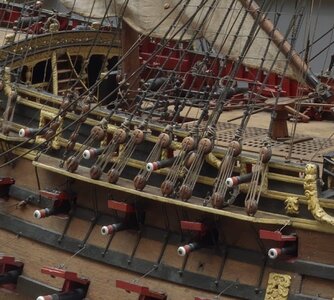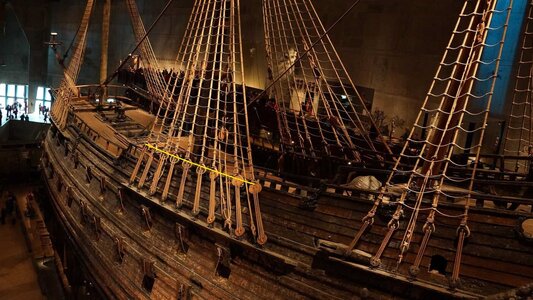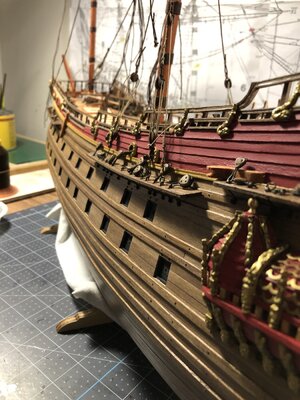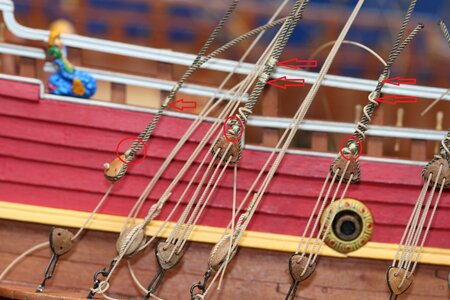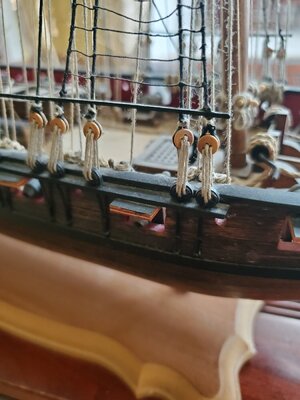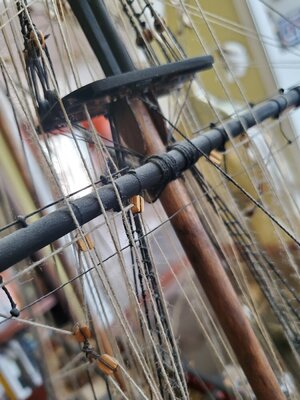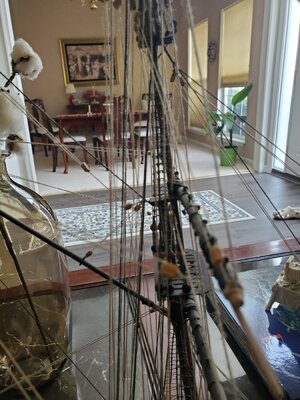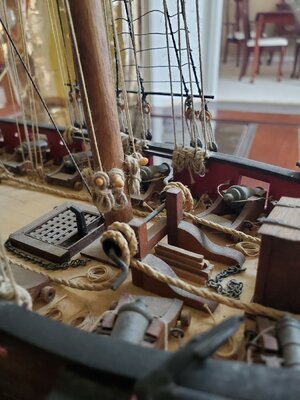Gluing the deadeyes to the channels is a fix to the problem of the chainplates not being the correct length, as measured between the channel and where they are nailed to the hull on the wale. The problem is usually when you aren't consistent with the length of the loops of wire that are part of the chain plate. After you nail the bottom of the chain plate to the hull, if you grab the lower dead any pull upward to take slack out of the chainplate assembly, the deadeye should not come too far away from the top surface of the channel. If, in the process of nailing the lower end of the chainplate to the wale, you bend the channel down or snap it completely off the hull, it's too tight. The trick is getting the chainplate to loose all its slack as you drive the nail(s) into the wale (and sometimes also the hull), when the nails are fully in. This all comes with practice. Also be aware that the length of the chainplate assemblies grow slightly as you go aft because of the increasing angle of the chainplate. When viewed from the side, chain plates and shrouds should be 100% parallel. Kits often have all kinds of crazy angles in the chainplates as they trive to avoid crossing in front of gun ports. This is terrible wrong. If you don't want either a shroud or a chainplate to cross over a gun port, the position of the shroud needs to be moved forward or aft to avoid blocking the guns and lids. With shrouds often running between two decks of gun ports, finding proper positions for the shrouds can be tricky, especially of the gun ports are not staggered properly between the two decks. In that case, bad gun port positioning can really screw you over later on when you start rigging the shrouds. Gun port and shroud/chainplate locations must be coordinated to be correct.The idea of creating a fixture with a piece of wood and two pins works to a certain extent. I found it challenging to keep the chainplates all at the same tension. The result was that there was not a straight imaginary horizontal line between the upper deadeyes. I am going to assume that I know what I am doing and that the problem is not with the builder(lol) but more with the way the chainplate fastens to the hull. Maybe the next time I will glue the lower deadeyes to the channels. Ok so my assumption is false; ie I don't know what the heck I am doing but perhaps there is still some merit in gluing the lower deadeyes to the channels.
An example of bad chainplate assembly. This stands out and detracts from the good appearance of the vessel. The chainplates are all over the place! Kits are often guilty of actually instructing new model builders to do this. Any sailor who saw this would probably vomit.

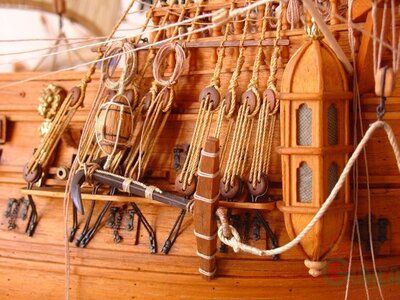
This is what you want. It's not precisely perfect, but the upper deadeyes are parallel with the channels, the chainplates and shrouds don't block the guns or lids although one gun on the upper deck forward is badly crowded, and the chainplates are parallel to the shrouds. Some of the anchoring plates for the chainplates are not perfectly in line with their shrouds above. I moved the channels down one full deck to their correct position, and had to work around gun ports already plotted and cut using kit instructions, so things got tight. At least everything was tensioned properly on my first ship build. Use a length of line and a pencil and mark on the hull where your shrouds and gun ports will be early in the build to avoid conflict.
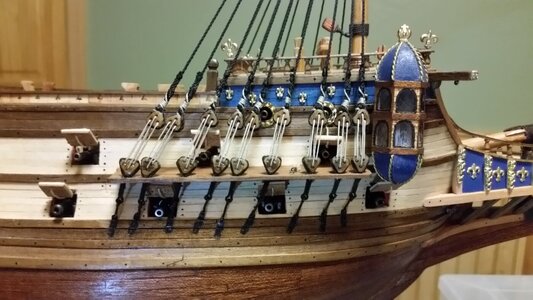
Last edited:




 . Cheers.
. Cheers.